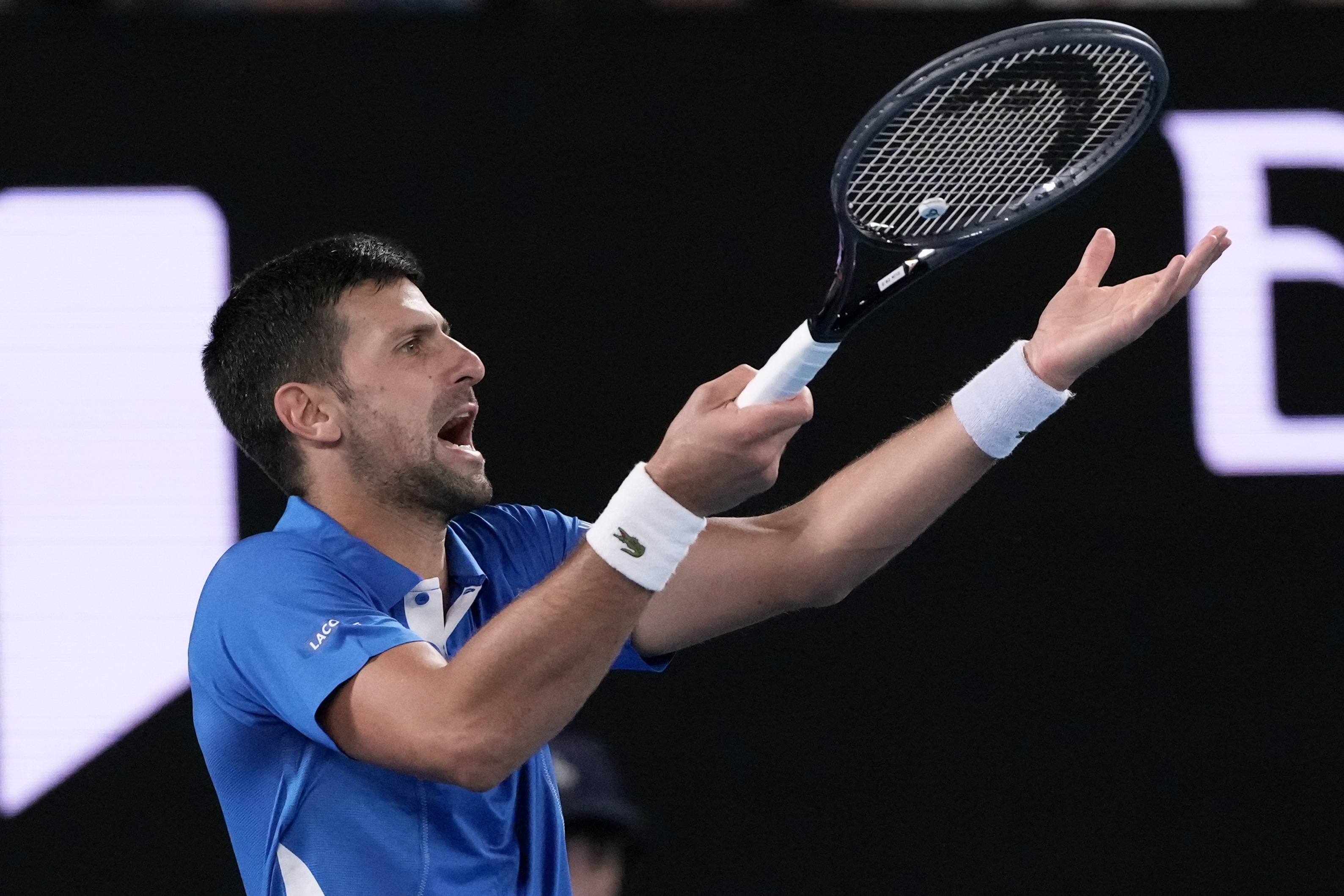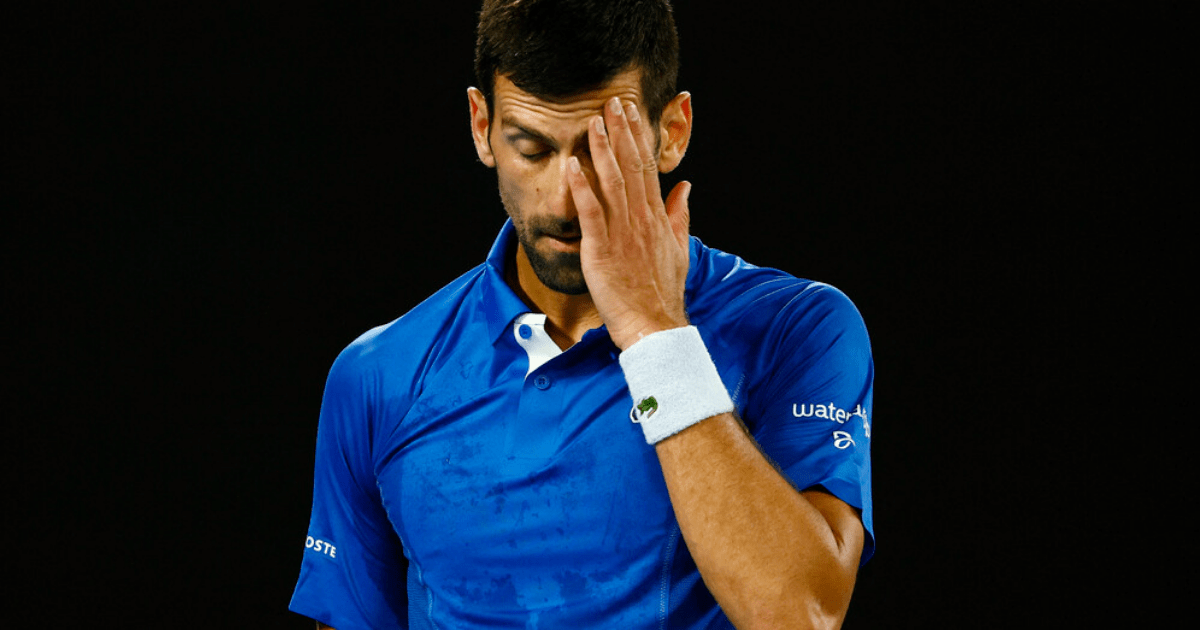Serbian tennis star Novak Djokovic had an explicit outburst during the Australian Open after mistakenly thinking a fan had broken a rule.
Novak Djokovic, 36, advanced to the second round of the tournament with a 4-1 victory over Dino Prižmić. However, during the match, Djokovic became distracted and was heard shouting, "Shut the f**k up" at spectators who were moving around.
The fans were actually following a new rule that allowed them to change seats between games, resulting in increased movement in the stadium. Normally, fans are only allowed to move during the change of ends.
Djokovic later admitted that he was unaware of the rule change, saying, "I did not know about that new policy or new rule… I've been used to some kind of atmosphere throughout my career."
The world No.1 also expressed his concerns about the rule change, stating that it caused the game to "drag" on. He mentioned that his opponent would wait for fans to sit down before resuming play, resulting in lost time.

Jordan Thompson, another player in the tournament, also discovered the new rule while on court and labeled the Australian Open as the "wokest ever."
Meanwhile, Andy Murray faced a first-round exit after being defeated by Tomás Martín Etcheverry.
Frequently Asked Questions
What role does video analysis play in training top tennis players?
Video analysis can be a valuable tool to train and develop top tennis players. It allows detailed reviews of technique, tactic, opponent patterns and match play. Video analysis allows coaches and players alike to review strokes in detail, identify areas for improvement, strategize and plan against future opponents. The video analysis helps to identify habits and tendencies which may be overlooked during intense competitions, and allows for more efficient and targeted practice sessions.
When can a player start training to improve their chances of becoming a pro?
There is no specific age for beginning professional tennis training, but starting early gives you an advantage. Most professional tennis players start training between the age of 4 and 7 years old. Early development allows for a player to establish a solid foundation with regards to skills, technique and coordination. To foster a passion and love of the game, it is important to balance training with normal childhood development.
How important is diet and nutrition in the training of an elite tennis players?
Tennis players are not exempt from the importance of nutrition and diet. An appropriate diet helps support intensive training. It provides the energy needed, aids in recovery, and lowers the risk for injury. A balanced diet for elite players includes carbohydrates, proteins and fats along with essential vitamins, minerals and nutrients. Hydration is another critical aspect, as maintaining good fluid balance is crucial to prevent fatigue and maintain concentration during play.
Can someone begin playing tennis late, and still be a professional?
While it is more challenging, it is not impossible for someone to start playing tennis at a later age and still achieve professional status. Success will depend on athletic ability and dedication as well as access to good coaching and competition. Late starters may need to undergo intensive, focused training. Although the road is more difficult, with talent and persistence, it’s possible to reach a professional level.
What is the daily schedule of a professional tennis player?
Tennis players have an intense and structured daily routine. It is often a long day on the courts, focusing on tactics, drills, and match-play situations. Aside from fitness training, players also engage in flexibility and recovery sessions, including stretching, massage or physiotherapy. Nutrition and psychological coaching play a major role in ensuring that athletes perform at their best both physically and mentally.
Statistics
- Approximately 70% of a professional tennis player’s training time is devoted to developing technique and on-court strategies.
- Studies show that superior agility and speed among tennis players can reduce their reaction time by up to 30%, which is crucial during high-level matches.
- Research indicates that junior tennis players who compete in international tournaments gain significant psychological advantage and experience, with participation leading to a 50% better transition into professional rankings.
- On average, it’s estimated that only 1 in 5000 high-level junior tennis players will develop into internationally ranked professionals.
- Nutritionists report that a tennis player’s diet should consist of about 55-60% carbohydrates, 15-20% protein, and 20-25% fats during intense training periods.
External Links
optimumtennis.net
tenniscompanion.org
essentialtennis.com
topendsports.com
itftennis.com
How To
Tennis Training: Optimize your schedule
Optimizing your tennis training schedule requires a careful balance of on-court practice, fitness training, match play, and rest. Allocating blocks of practice time to the development of technical skills is a good way to start. Build a strong fitness base by including sessions on speed, strength and endurance each week. Plan at least one competitive match per week for the application of skills. Introduce rest days to allow for recovery; these should follow particularly intense training days or match play. A regular review of your training plan is necessary to keep up with the latest developments.

